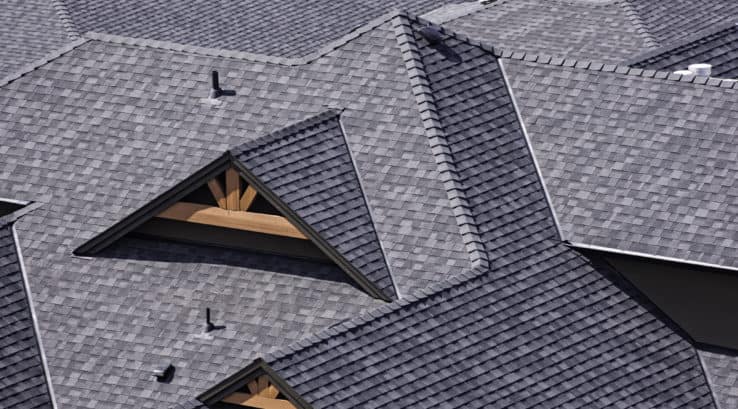A clean roof is the icing on the cake of your home’s exterior, giving it an attractive finished look and enhancing its curb appeal. Just like the siding, windows and other exterior elements, roof shingles can get dirty over time and detract from your home’s aesthetic. It’s important to know how to clean roof shingles effectively and safely to restore a pristine appearance without harming your roofing material.
Why Cleaning Roof Shingles May Be Necessary
There are several possible causes for the grimy, aged look of dirty roof shingles, but the most common culprits are algae, moss growth and organic debris falling from nearby trees. In addition to looking unattractive, these issues can erode a roof’s energy efficiency, damage the shingles, cause decking deterioration and lead to a premature roof replacement. Cleaning roof shingles can help prevent these problems, but it’s vital to use the right cleaning method to avoid causing unintentional damage.
Details about the common issues adversely affecting a roof’s appearance and how to clean roof shingles plagued by these problems are as follows:
Algae
The unsightly black streaks that appear on asphalt shingles are usually caused by gloeocapsa magma, a blue-green alga that spreads easily via tiny, wind-borne spores. Although it makes a roof look dirty, the organism doesn’t damage asphalt shingles. However, unchecked algae growth can reduce the reflective quality of cool roofing. Cleaning roof shingles periodically to remove algae growth not only improves a home’s aesthetic, but it’s essential for a cool roof to remain energy efficient.
Moss
Moss is a plant that absorbs moisture through its leaves rather than a root system, so it needs a wet environment to survive. It’s most often found on the north-facing sections of a roof that gets less direct sunlight and especially in areas shaded by overhanging tree limbs. Like algae, moss produces spores that are easily carried on the wind from one roof to another.
As it grows, moss can lift or curl the shingle’s edges, making them more vulnerable to being torn off by high winds. Moss can also draw water downward into the roof system, where it causes deterioration of the underlayment and decking and eventually leads to leaks.
Debris Accumulation
Debris that falls from nearby trees and overhanging limbs can collect on a roof and cause a host of problems. As small branches, twigs, pine straw, leaves, seeds and acorns accumulate, they can block the flow of rainwater and trap damaging moisture against the shingles. This organic debris can also provide a food source for insects, rodents and moss, which cause further harm to the roof.
How to Clean Roof Shingles Safely and Effectively
Cleaning roof shingles should be left to a professional because moving around on a roof is hazardous work, especially if the surface is wet. To protect your roof from collateral damage, the pro you hire should follow these best practices based on the specific problem you’re experiencing:
- Algae Growth. A pro should use a 50:50 mixture of water and regular household bleach and thoroughly spray the roof, paying special attention to areas of algae growth. After leaving this solution on the surface for about 20 minutes, the entire roof is rinsed with low-pressure water spray.
- Moss Growth. The same 50:50 bleach and water solution should be used to kill moss, and after 20 minutes, the roof should be rinsed. Moss may take longer to die and loosen, and areas with severe growth may need a second application. Once it’s loosened, a pro should use a leaf blower to clear away the plant debris.
- Debris Accumulation. Organic debris should be cleared away by hand, with a leaf blower or with gentle pressure from a soft-bristled brush or broom. Any moss or algae growth that’s discovered underneath should be treated appropriately. The roof should be rinsed with a low-pressure spray to clean any remaining bits.
As a word of caution, make sure the professional you hire understands how to clean roof shingles safely and doesn’t plan to use a pressure washer, which can strip off the protective granules.
To learn more about your options for algae-resistant and cool roofing, contact us today at Thompson Creek.


